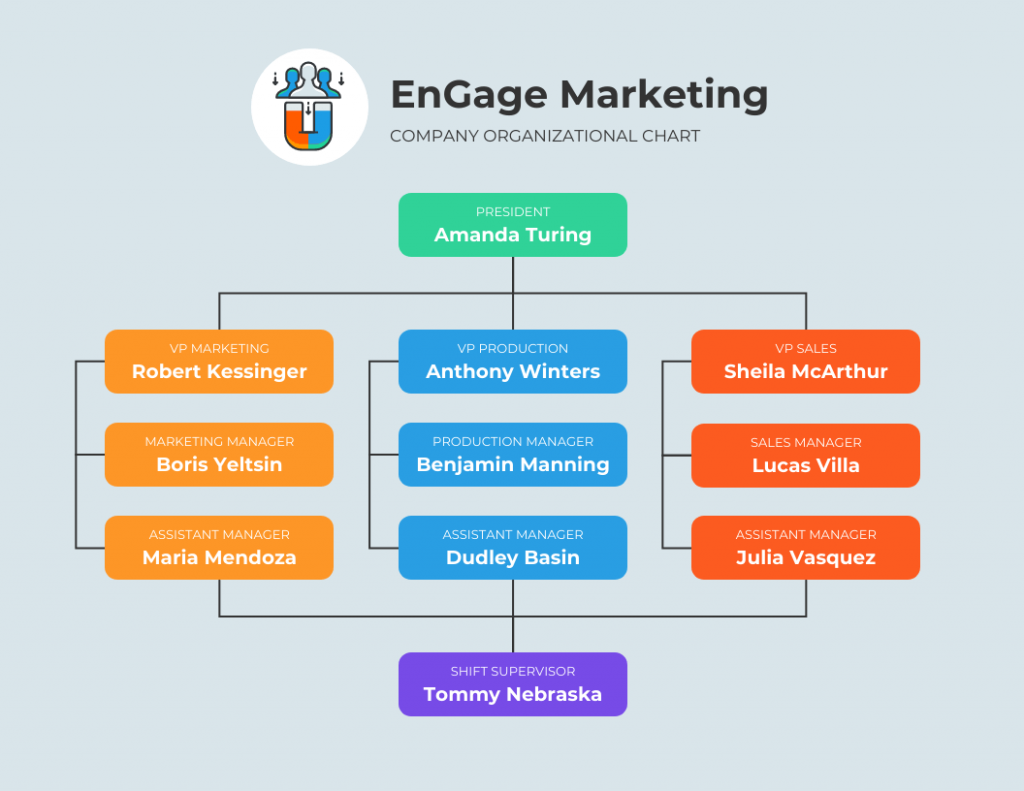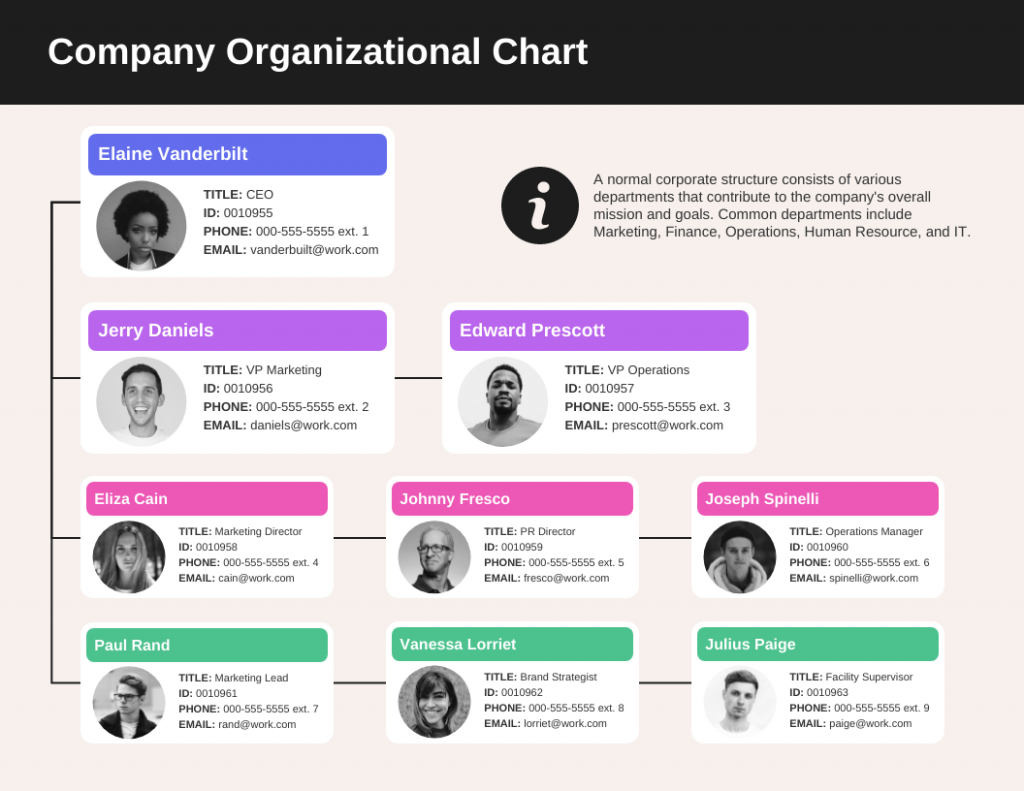Why Every Business Needs an Organizational Chart

Whether you are a CEO or a new hire, each member of the team contributes to the success of the organization. Because of this, it’s important to understand how everyone is connected within the company. It’s also essential that you know how to make an organizational chart.
A robust business organizational chart allows an organization all sorts of benefits, including ease in communication between employees, provision of leadership with resources necessary to establish effective strategies and cultivate talent and mitigate risks through network control by establishing accountability. Furthermore, an organizational chart can be used as a tool when looking at potential mergers or acquisitions because it helps establish key relationships throughout the process.
Organizational charts allow communication ease.
A well-built organizational chart is a valuable resource that efficiently outlines the details of all relationships within an organization. Charts show how key people, departments and job titles relate to one another, as well as the hierarchy of power among employees. Once this information has been disseminated throughout the company, it can be used to improve communication across teams.
An organizational chart helps prioritize work because everyone knows their place in the chain of command. This helps avoid confusion or miscommunication between employees who might have different levels of authority. Organizational charts also provide management with a roadmap designed to help them better lead and manage their team members so they each feel empowered.
Organizational charts provide leadership with resources necessary to establish effective strategies
When leaders are aware of what the organizational structure looks like, they can use that information to their advantage when making decisions. An organizational chart allows leaders to assign specific tasks to individuals based on the goals of the company, ensuring that each team member is focused on their primary responsibilities.
Organizational charts show leadership where key resources are located within the organization so that it does not have to rely on guesswork when assigning tasks in different departments; if there is a vital resource in another department, management knows this before making requests.
Organizational charts cultivate talent and mitigate risk within networks by establishing accountability.

An organizational chart outlines what everyone in an organization is expected to be doing at any given time. When employees know exactly what’s required of them, it’s easier for leadership to identify those who are not meeting expectations.
Organizational charts help management and key leaders establish standards of success and failures. This helps them evaluate employees based on goals and performance.
As a result, an organizational chart provides accountability that holds people within the organization accountable for their actions both individually and as a team. If someone is failing in one area or not performing well given his role at work, everyone else has to pick up his slack. The diagram helps establish fairness among the team members by making sure they all carry their own weight.
When it comes to business, there’s no denying the importance of effective leadership; it drives an organization forward by establishing specific goals and objectives and providing direction for how those should be met. In order to be a good leader, it’s essential to understand the company’s culture and structure or organizational chart. That way, know exactly what direction your business is headed in at any given time.
Organizational charts provide a roadmap for leadership,
An organizational chart can help anticipate challenges before they happen by showing leadership where key resources are located.
Organizational charts show leaders where their most valuable employees are located both vertically and horizontally throughout an organization so that they can assign them directly to projects based on skillsets and work style preferences.
Organizational charts set standards of success and failures.

In order to be a good leader, it’s essential to understand the company’s culture and structure or organizational chart. That way, you’ll know exactly what direction your business is headed in at any given time.
An organizational chart outlines what everyone in an organization is expected to be doing at any given time. When employees know exactly what’s required of them, it allows management to identify those who are not meeting expectations. This helps mitigate risk because everyone knows exactly what is expected of them and how their work contributes towards the end goal. It also positions them well for promotion when roles become available.
An accurate organizational chart template outlines each team member’s level within the company based on hierarchical relationships between key leadership positions.
Organizational charts help employees adapt to change.
An organizational chart also outlines each team member’s level within the company based on hierarchical relationships between key leadership positions, so employees know what roles they can play within various projects and initiatives. It helps them know when they need to step up and take additional roles for the growth of the business.
Whether you are new or you’re already a veteran when it comes to creating an organizational chart, you may want to look at Venngage. The platform has tons of templates you can use to create or update your company’s org chart using an organizational chart maker. All you need to do is pick the right sample organizational chart and tweak it based on the needs of your company.
Signing up is easy so get started today!






